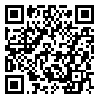Volume 8, Issue 3 (volume8, Issue 3 2020)
CPJ 2020, 8(3): 71-85 |
Back to browse issues page
Download citation:
BibTeX | RIS | EndNote | Medlars | ProCite | Reference Manager | RefWorks
Send citation to:



BibTeX | RIS | EndNote | Medlars | ProCite | Reference Manager | RefWorks
Send citation to:
gholami M, Delavar A. Construction and validation of memory test in preschool children. CPJ 2020; 8 (3) :71-85
URL: http://jcp.khu.ac.ir/article-1-3311-en.html
URL: http://jcp.khu.ac.ir/article-1-3311-en.html
Azad university , gholamitooranposhti@gmail.com
Abstract: (6104 Views)
One great ability of the brain is memory. Poor visual-auditory memory leads to dyslexia, dyscalculia and hyperactivity. Therefore, it is necessary to develop a test to determine the ability and accurate performance of memory. With this in mind, a test has been prepared using theoretical literature. This researcher-made memory test consists of four parts (numerical-verbal memory, visual memory, working memory and auditory-sentence memory) and its validity has been confirmed by professors of cognitive psychology and counselling in addition to using the random cluster sampling method on a sample of 308 elementary school students. The questions were analysed by relevant statistical methods and their validity, reliability and norm scores were determined. To evaluate the reliability of the test, three methods were used. The reliability coefficient was 0.83 using the internal consistency method and the Pearson correlation coefficient was determined to be r = 0.79 between the two halves of the questionnaire, which indicated that there was a high correlation between the two halves of the questionnaire. To determine the validity of the structure and components of the questionnaire, the principal component analysis method was used by rotation in the normalised Varimax method and to evaluate differential validity, an independent t-test was used. The results showed that there was a significant difference between the mean scores of male and female students. (P < 0.001 and t (204) = 2.76). Based on the obtained reliability and validity, the audiovisual memory test is a tool that could be used by disorder and counselling centres. Moreover, it could be used as a tool for early assessment and diagnosis in the case of preschool students.
Type of Study: Research |
Subject:
Special
Received: 2020/09/2 | Accepted: 2021/02/1 | Published: 2021/02/1
Received: 2020/09/2 | Accepted: 2021/02/1 | Published: 2021/02/1
Send email to the article author
| Rights and permissions | |
 |
This work is licensed under a Creative Commons Attribution-NonCommercial 4.0 International License. |






